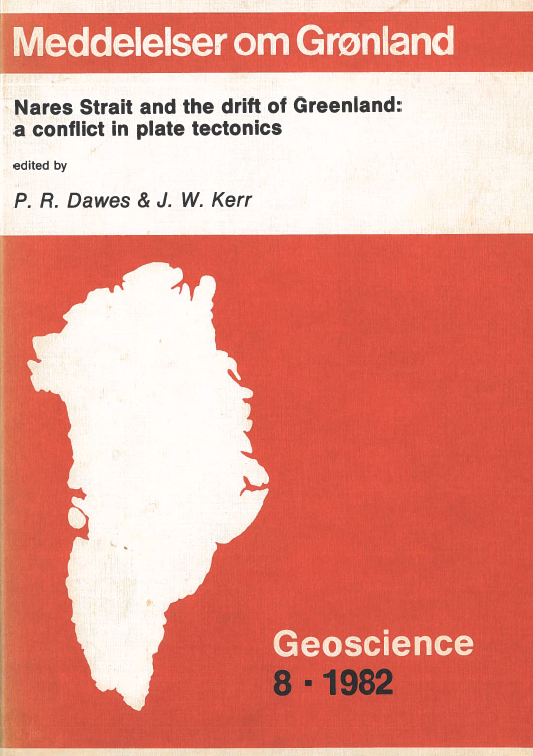Nares Strait and the petroleum explorer
DOI:
https://doi.org/10.7146/moggeosci.v8i.141067Abstract
It is important to be able to make intelligent guesses concerning the effect of lateral movement along Nares Strait on the resulting sedimentary section and the heat regime. A prognosis of the theoretical well - Lincoln No. 1 - would need to contain forecasts concerning the conditions of hydrocarbon generation in the sediments.
Case No. 1 for the postulated sedimentary section assumes 250 km of left-lateral movement along the Nares Strait lineament. Rocks are Lower Cretaceous to Pleistocene. Attendant heat is assumed to be high. Case No. 2 assumes very little movement along the lineament and, therefore, a relatively quiet tectonic history. Rocks are Cambrian to Pleistocene. Attendant heat is assumed to be average.
A simulated analysis of the geochemistry of the situation in Case No. I reveals that maximum expulsion of hydrocarbons occurs at 4000 metres' depth. In Case No. 2 the maximum expulsion would occur at 5000 metres. Therefore, it is tentatively concluded that Case No. I would provide the best conditions for hydrocarbon generation and entrapment at approximately 1000 metres shallower than Case No. 2.
Large-scale movement along the Nares Strait lineament and the attendant higher heat regime would be a beneficial circumstance for the petroleum explorer.
Downloads
Published
How to Cite
Issue
Section
License
Coypyright by the authors and the Commision for Scientific Research in Greenland / Danish Polar Center. No parts of the publications may be reproduced in any form without the written permission by the copyright owners.


